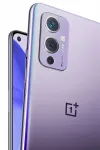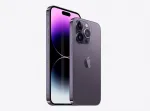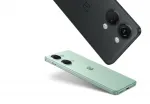The Nokia 6630, also known as the Nokia 6630, is a discontinued mobile device developed by Nokia, a leading brand in the tech industry. This device, first announced in 2004, has several features that made it stand out during its time, making it a popular choice for those looking for a reliable and efficient device.
The Nokia 6630 has a compact and ergonomic design, making it comfortable to hold and use. It has a weight of 127 g (4.48 oz) and dimensions of 110 x 60 x 21 mm (4.33 x 2.36 x 0.83 in), making it easy to carry around and fit in your pocket. The device uses a Mini-SIM card, which was the standard at the time of its release.
In the "Misc" section, we can find more details about the device's design. The Nokia 6630 comes in a stylish Light Gray color, giving it a sophisticated look. It also has a SAR value of 0.55 W/kg (head) 0.58 W/kg (body), which indicates the rate at which the device emits radiofrequency energy. This value meets the legal limit set by international standards, ensuring the safety of users.
In terms of communication, the Nokia 6630 is equipped with a Pop-Port for USB connectivity, allowing convenient data transfer between devices. This device also supports 1.2 version of Bluetooth, making it easy to connect with other devices for wireless data transfer. However, it does not have WLAN or radio capability, and it is not equipped with GPS for positioning.
The Nokia 6630 also has excellent sound quality, thanks to its loudspeaker and vibration alert feature. It also supports various formats of ringtones, including polyphonic, monophonic, and MP3, allowing users to customize their device's sound according to their preference.
In terms of memory, the Nokia 6630 comes with 10MB of internal storage, which may seem limited by today's standards. However, it also has a card slot for RS-DV-MMC, with 64 MB card included, providing additional space for storage. It supports voice dialing and memo, making it easier and more convenient to use.
The device runs on a removable Li-Ion 900 mAh battery (BL-5C), which provides a standby time of up to 264 hours and talk time of up to 3 hours. This ensures that the device can last through the day with moderate usage. Additionally, the device also has a 5-way navigation key for easy menu navigation.
The Nokia 6630 has a clear and vibrant 2.1-inch TFT display, with a resolution of 176 x 208 pixels (~130 ppi density). This allows users to view images, videos, and text with clear and detailed quality. The display also has a 35 x 41 mm screen size and 14.0 cm screen-to-body ratio, providing ample space for viewing.
In terms of network and connectivity, the Nokia 6630 supports various technologies such as GSM and UMTS. It has 2G bands of GSM 900 / 1800 / 1900 and 3G bands of UMTS 2100, allowing users to stay connected to the internet and make calls anywhere, as long as these networks are available. The device also supports data speeds of up to 384 kbps, ensuring a decent internet browsing experience.
The Nokia 6630 runs on the Symbian 8.0, Series 60 v2.0 UI operating system. This OS was designed specifically for Nokia devices and was highly regarded for its reliability and user-friendly interface. It also has a 220 MHz ARM926EJ-S CPU and a TI OMAP 1710 chipset, which were considered powerful during its time.
As for its camera, the Nokia 6630 has a 1.3 MP rear camera, capable of recording videos. At the time of its release, this camera was considered top-tier and allowed users to capture decent quality pictures and videos. However, it does not have a front-facing camera.
In conclusion, the Nokia 6630, or also known as the Nokia 6630, is a reliable and efficient device that was highly popular during its time. Its compact design, sturdy build, and several impressive features made it a top choice for many mobile users. It may not have all the latest features, but it certainly served its purpose well during its time.









